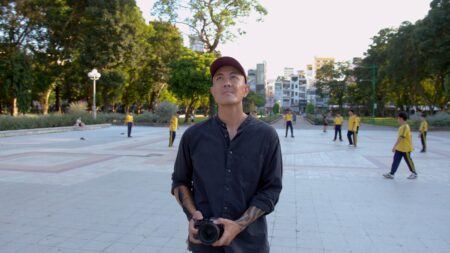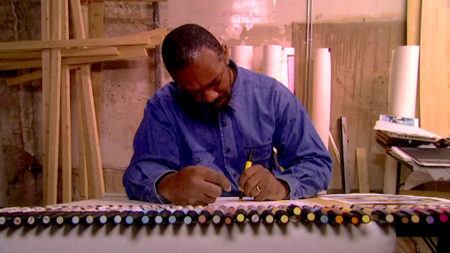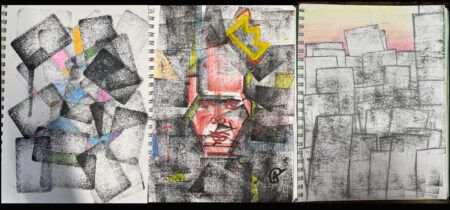Teaching with Contemporary Art
Getting Outside

Photo by Joe Fusaro.
After a 2020–2021 school year packed with hybrid and virtual learning for students across the country, teachers have been faced with a return to “normal” that’s a little different than the normal we remember. And it’s not just the masks masking expressions. Learning in isolation and staring at a screen, literally all day, has taken its toll on our kids. It’s important for teachers to construct learning experiences that go beyond solo seated activities in a classroom. In that spirit, I would like to propose that a few changes in the art classroom (and perhaps across disciplines) would make good sense.
For example: What would happen if we got out of the classroom to teach our students more often? What would happen if we designed lessons and collaborative experiences where students moved within their school campuses, among their peers, and activated spaces in ways that shared the complex thinking and beautiful ideas they develop with a larger community? What if we gave the students we teach more ownership of the spaces within our schools?
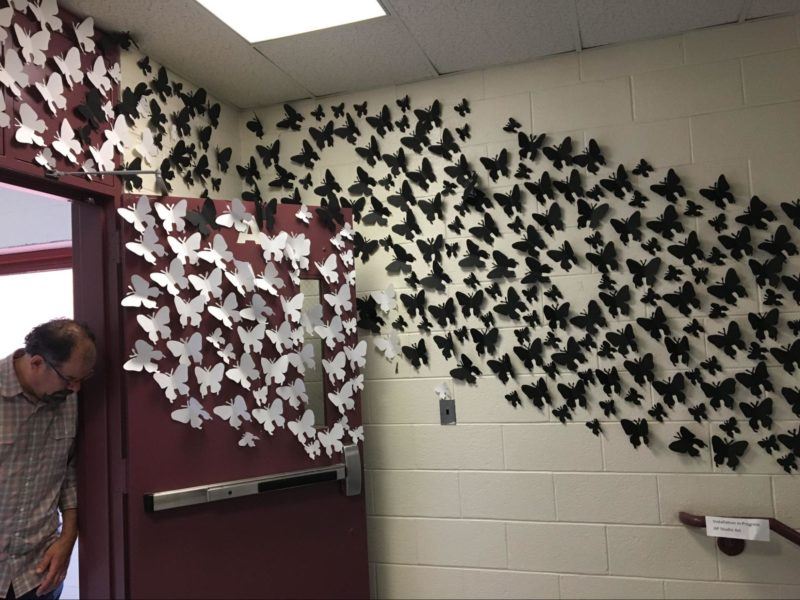
Photo by Joe Fusaro.
I recently had the opportunity to collaborate with three of our awesome Art21 Educators—Sarah Kolker, Lisa Becker, and Steven Speciale—on a virtual professional development workshop for teachers, called Getting Outside the Classroom. There, we discussed the “why” of teaching outside the classroom and introducing elements like installation and site-specific art in our curriculum, and its special relevance for art education today. We agreed that teaching beyond the classroom promotes leadership, gives students an opportunity to engage with a much wider audience, and allows them to experience a transformation within their schools and communities that “seated learning” just doesn’t match. When we went deeper into thinking about why it makes a difference, we also agreed that creating installations and site-specific works gives students the opportunity to think and work like contemporary installation and performance artists, such as Robin Rhode, Ann Hamilton, Song Dong, and Yin Xiuzhen, all featured in Art21 films.
But suggesting that teachers simply get out of the classroom and create these experiences for their students is so much easier said than done. Sometimes not having that familiar classroom environment can cause a lot of anxiety for teachers and students alike. Some teachers fear that changing “where class takes place” can result in a variety of management issues. Others say they cannot supervise students working in more than one location. And while these are all fair points, I would argue the benefits ultimately outweigh the risks. If a teacher plans carefully, is transparent about the process, and allows students ownership of their spaces, I have seen time and time again that this kind of artmaking is actually more engaging, involves less management issues, and can be supervised in a variety of ways. When students take more control over the spaces they occupy in our schools, such as redesigning the way a main lobby is experienced by those entering the building, it’s empowering for all those involved.
But why is this approach to artmaking often more engaging for students? For starters, it gives them a chance to work with others and take ownership of a space, whether in school, on campus, or even in their community. It engages students because they are not following directions but rather making directions. For some students, the space itself interests and engages them; others relish the opportunity to make an overlooked space special in some way.
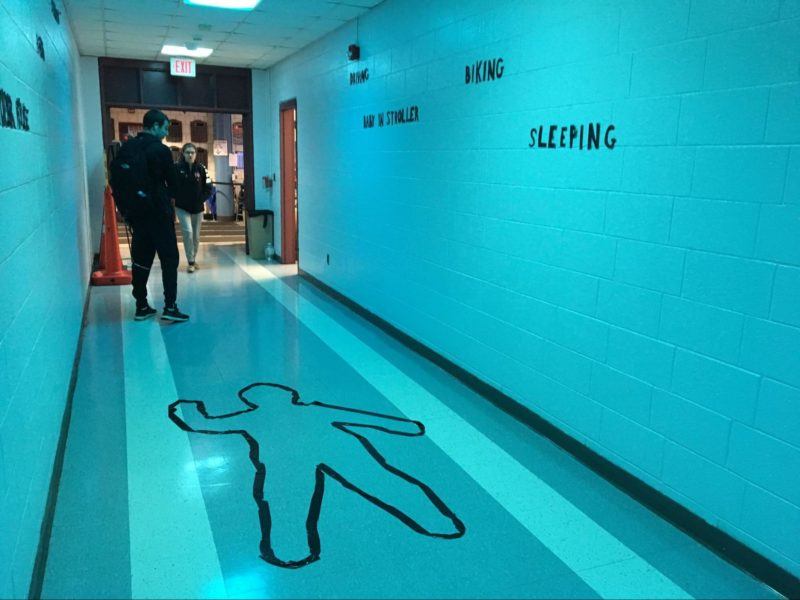
Photo by Joe Fusaro.
When students are engaged at this level, when they’re in the moment constructing a vision they have helped shape, behavior problems actually decrease. They feel focused and responsible. And because good planning is the best classroom management, careful selection of student groupings, a schedule that is co-created with students (vs. “assigned” or “given” to them), and clear parameters as to which spaces are available to work with, will all go a long way. The more teachers plan and the more students participate, the more everyone can feel confident.
This leads to one of my final points regarding supervision. We all know that students must be supervised during our classes. I wouldn’t suggest that teachers send students all over the building to create installations without a plan to supervise them in some way that is safe for everyone involved. But getting out of the classroom doesn’t mean abandoning supervision. Here are three possibilities for supervising students during a lesson (or series of lessons) that include installation within the school.
- Have students work on one floor and circulate between their spaces the same way you would circulate around your classroom.
- Have students do all of the fabrication for their installation in the classroom, then designate a day or two to install the art work outside of class. Have a few colleagues help supervise students for the class period(s) they create the actual installation.
- Have students work outdoors in an area that has plenty of room but where all the chosen spaces can be easily seen (or supervised) at once. One of the criteria as students plan could be something like, “The viewer should always be able to see all installations as a group, and be able to walk closer to see any single installation in more detail.”

Photo by Joe Fusaro.
A simple and straightforward introduction to installation art might include students researching with a partner where they might like to feature a work of art besides the places they’re usually shown (bulletin boards, display cases, etc.). Both students can take photographs of this space from a variety of perspectives, and then think collaboratively about the kinds of things that may transform the space in terms of color, media, and message. Once the idea is established, both students can then sketch ideas with these spaces in mind, on location if possible, or even create drawings right on top of the printed photos they took. During this process it would be useful to share a few of the artists I mentioned previously. Will they utilize bright colors and “go big” like Robin Rhode, create something participatory like Ann Hamilton, and/or utilize everyday materials like Song Dong and Yin Xiuzhen? All along, teachers can encourage students to think about what they want their viewers to consider, and plan for works of art to encourage that thinking.
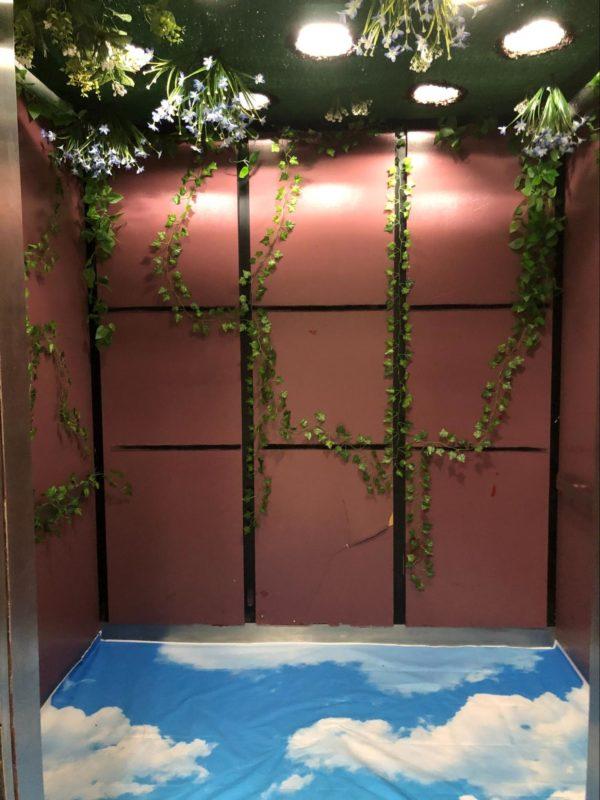
Photo by Joe Fusaro.
Teachers who want to test this approach to artmaking with their classes might choose a space outside the classroom that is easily supervised, such as a hallway or the space in front of the school building. Teachers can allow students to pick their own partners but then switch up the partners for in-progress feedback during the course of the unit, which allows them to work with a variety of classmates. An opening reception or some kind of kickoff event is also a good idea, to celebrate the awesome work our students accomplish.
Designing lessons and collaborative experiences where students move within our school campuses and activate public spaces is a worthy investment of our time and effort. As we move further away from that long stretch of pandemic isolation into a time where students, and even adults, must relearn working together in shared spaces, getting outside the classroom to teach and learn has benefits beyond the opportunity to make great works of art.
